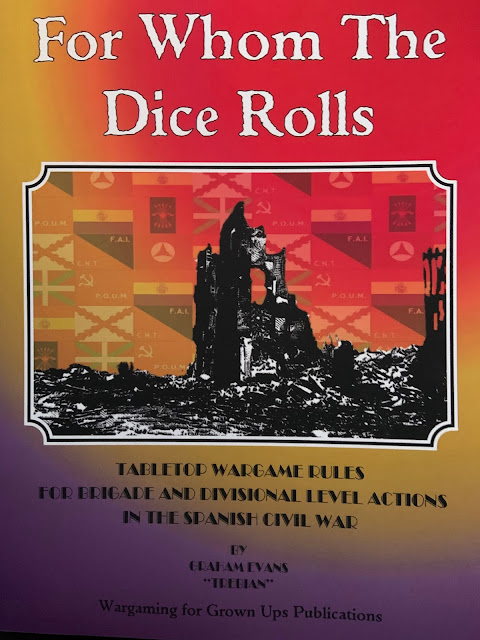Ruminations on wargaming, especially the Seven Years War, the English Civil War and other 'black powder' periods. Occasional forays into obscure Nordic music and opinionated 'dribble' [sic] on Grimsby Town Football Club.
Sunday 14 November 2021
Two Side Dishes
Tuesday 9 November 2021
Memorial Corner
We had a second trip to Cleethorpes recently, and on Friday morning I took a stroll out from the house where we were staying. The sky was clear and the air still and cool. Perfect weather really. In the area known as High Cliff (which in fact is a low clay cliff, but higher than the surrounding land*) is a memorial to all the UK armed forces. The town plays host to parades on Armed Forces Day and this is the focal point at the end of the parade.
* Aside. In the early19th century the fishing village of Cleethorpes had become a resort, for presumably the relatively well-off as travel was by horse-drawn carriage. Much of the town's seafront was a low clay cliff, which was subject to erosion much like those on the Holderness coast of Yorkshire. By mid-century a railway had been built to neighbouring Grimsby, where the railway company had seen an opportunity and expanded the docks. So they built a railway and expanded the reason for building it to make sure it was successful! This was working so well that in the 1860s the railway company repeated the trick. As well as expanding the railway the couple of miles to Cleethorpes, they built the first part of the Promenade. As well as providing a place to perambulate (adding to the amenity of the place and encouraging more railway traffic), the promenade acted as a bulwark for the cliffs, preventing further erosion. That made the buildings in the old part of town safe too. Visionary stuff.
This is very near the Royal Air Forces Association building, and in front of that in the Pier Gardens is a memorial statue to the RAF. This being Lincolnshire, there is a big association with Bomber Command.
 |
| Note the 's' in 'Forces'. The building also hosts the local branch of the Parachute Regiment Association. |
 |
| The RAF memorial, currently undergoing renovation. |
These memorials I've known about, though both were installed in relatively recent times. A few paces further along in the gardens I came across a few new memorials.
 |
| Bench installed in honour of Colour Sergeant Findlay of 2nd battalion the Parachute Regiment ('2 Para') killed in the Falklands War. A couple of links can be found below. |
 |
| A few yards away is this bench in honour of the 2nd battalion, the Royal Anglian Regiment. |
The Royal Anglians are one of those multi-battalion regiments created following the mergers of county (infantry) regiments, in this case from Eastern England. 2 RAR incorporates the former Royal Lincolnshire Regiment (10th Foot), hence the nickname of the Poachers. The 'local' cavalry regiment was the 17th/21st Lancers, since subject to two further mergers, the last being in 2015. It's sad to note the flowers left on the bench, clearly indicating a loss in relatively recent times.
Across the way from the gardens, on Alexandra Road is a modern Baptist church. This replaced the earlier Baptist church that was hit by a bomb dropped by a Zeppelin in 1916. The church hall was temporarily being used to accommodate soldiers of the Manchester Regiment who had been sent to the area to help protect the Humber. Twenty-seven soldiers were killed outright with a further four dying of their wounds.
 |
| Plaque tucked away on the side of the church. Links about this incident below. |
http://friendsofcleethorpesheritage.co.uk/home/alan-dowling-articles/cleethorpesandthezeppelinraid
https://livesofthefirstworldwar.iwm.org.uk/community/2933
Two final memorials lie in this area. Both civilian. The author of the article on the Cleethorpes Heritage website, Dr Alan Dowling, was librarian at Grimsby Central Library and had a couple of books published on local history. One on the development of Grimsby and a companion book on the development of Cleethorpes. Both are excellent examples of good local history - not the usual collections of photos of 'bygones' that you get in local bookshops. On a bench close to the Poachers' bench is one with a plaque to the good doctor.
The other is a memorial to a much broader group of people. Those who lost their life at work.
All of these can found in an area 120 x 50 yards. See map below.
 |
| The buildings to the right of the church are the council offices also hit in the Zeppelin raid. The third bomb fell in the street 2nd to right (Sea View Street). |
I'm glad that all these people referred to have been remembered in this way.
Monday 1 November 2021
Space Saving
 |
| Under 3 feet wide. 34 inches or 87cm in new money. |
Period | No. of painted and based figures | Armies | Scale |
SYW | 3520 | Austrian, Prussian, Russian | 6mm |
ECW | 1482 | Parliamentarian and Royalist | 10mm |
AWI | 305 | American and British | 10mm |
Napoleonic | 1956 | Anglo-Portuguese-Spanish and Prussian | 6mm |
WWII | 160 | Finnish and Soviet | 10mm |
Total | 7423 |






